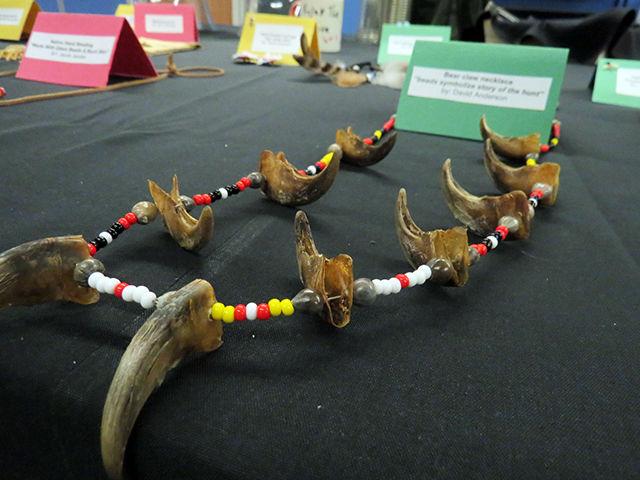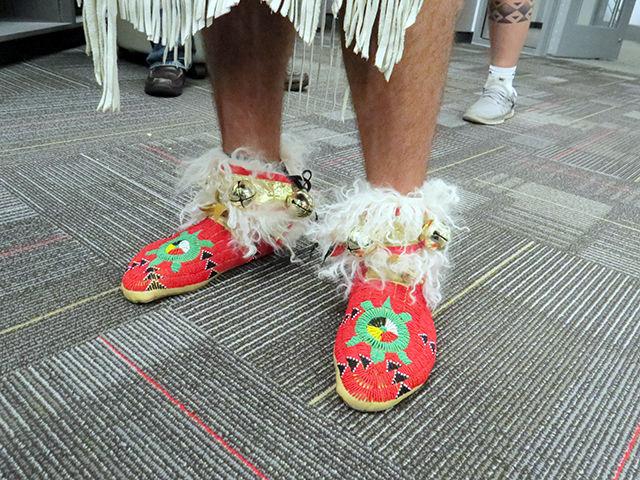The Alpha Pi Omega Sorority, Inc. gave students the chance to experience Native American culture through the eyes of their peers at the Native Art Show Tuesday as part of Native American Heritage Month in Talley Student Union.
Hosted by Multicultural Student Affairs, the pieces on display included original handmade artwork submitted by Native American students as well as Native art from the Museum of History and spanned six native cultures: Lumbee, Haliwa-saponi, Waccamaw-siouan, the Eastern Band of Cherokee Nation and the Coharie. The top three submissions won $50, $25 and $15 respectively.
Karli Moore, a sister of Alpha Pi Omega, said, “art is a big part of native culture and this is one way that we can showcase our culture to other people.”
Moore said the event was based on four tenets: education, traditionalism, spiritualism and contemporary issues, which were imbued into each piece.
The pieces were judged by their complexity and by what they “said” in regard to their native culture, according to Margaret Hidalgo, a member of the Lumbee tribe and a judge for the event.
Landon Brewer, a first-year student in exploratory studies and a member of the Lumbee tribe, dressed in traditional men’s dance regalia that had been passed down to him from his father and from his father before him.
According to Brewer, the regalia was comprised of Eagle feathers, otter pelt and a chest plate decorated with beads. Brewer won first prize for his hand-beaded moccasins.
“Those moccasins were very hard to make,” Hidalgo said. “They are two fold—they are both functional and a thing of beauty.”
David Anderson, a senior studying horticulture and plant and soil science and a member of the Eastern Band of Cherokee Nation, won second place for his hand-beaded earrings, though he submitted several interesting pieces, of which often used a red, black and white color scheme in honor of the Wolfpack.
“I’m a State guy,” Anderson said.
Anderson also showcased a bear claw necklace that was made from a bear he killed himself and a traditional war club from the 1600s.
“Bear hunting is a big cultural activity,” Anderson said. “It’s nothing special living up in the mountains.”
Anderson said he shot the bear on a typical hunting trip with his dog.
The third place winner was not present at the event, but the artwork that won was a charcoal drawing.
While the event was a chance for people to learn about Native American culture, several of the students who showcased work said that because of the forced migration of many native tribes during the colonial era, finding information about their heritage can be difficult.
“If you look for it hard enough you’ll find it,” Anderson said.









